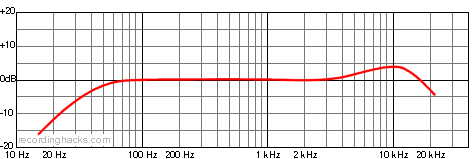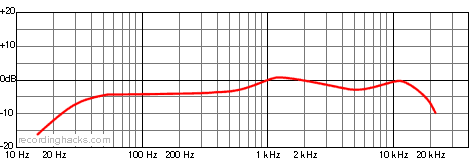
 Blue Microphones Snowball
Blue Microphones Snowball
Multi-Pattern Condenser Microphone
USB-powered mic with two capsules and three operational modes: omnidirectional, cardioid, and cardioid with -10dB pad. The mic has built-in A-to-D converters, and outputs digital audio via the USB port at 44.1 kHz, 16 bits.
SoundOnSound
The omnidirectional pattern behaves more like a wide cardioid at most frequencies and the sound picked up at the rear is much duller than the sound picked up at the front…
The presence peak [of the Omni mode] is much higher than that of the cardioid modes. When the mic is used on-axis, the omni setting produces a nice airy sound which makes the cardioid modes sound slightly dull by comparison — almost like listening to a typical dynamic mic next to a capacitor mic.
Electronic Musician, 2007
Blue intended the Snowball to be simple and easy to use, and it is. Like most of the other USB mics, the Snowball’s A/D converter has a 16-bit, 44.1 kHz resolution. However, the Snowball doesn’t give you the option of selecting a lower bit depth or sampling rate. A company spokesman noted that although there are newer USB chips offering a greater bit depth, it wouldn’t be of interest to the typical Snowball user: anyone wanting a higher resolution would use a regular mic with a dedicated converter.
As of July, 2009, BLUE has sold over 300,000 of the Snowball microphone.
Permalink: Blue Microphones Snowball
The mic was released in 2005.
Specifications
| Frequency Response - OmnidirectionalClick Graph to Compare! |
|---|
 |
| Frequency Response - CardioidClick Graph to Compare! |
 |
| Pickup Patterns | Pads & Filters |
|---|---|
|
Omnidirectional
(40 - 18,000 Hz) Cardioid (40 - 18,000 Hz) |
|
| Capsule Dimensions | Impedance | SPL/Noise |
|---|---|---|
| Diaphragm diameter: 14mm |
n/a |
| Weight | Length | Max Diameter | Interface(s) |
|---|---|---|---|
| 460g (16.23oz) | 95mm (3.74'') | 95mm (3.74'') |
|
| Power Specifications |
|---|
|
Did we get anything wrong on this page? Please let us know!



